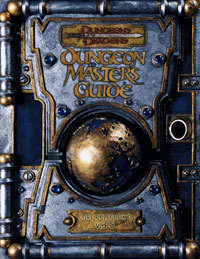How to Build a City, One District at a Time! If you plan to run an extended adventure -- or even a whole campaign -- in an urban environment, it's important to put some time and effort into describing the details of your city. Chapter 5 of the Dungeon Master's Guide for D&D v.3.5 provides a basic framework for describing some key features of a city, such as its power centers, assets, and highest-level nonplayer characters. This web enhancement expands that basic system into one that is more complex, but well worth the extra work in terms of the payoff for running a city-based campaign. The basic unit of this city construction system is the district. A district is roughly equivalent to a modern city block or a small neighborhood. On average, a district represents about 500 people, though some districts (such as tenements) have a higher population density than others (such as noble estates). Because a district is so large, this system is unsuitable for use with smaller settlements. A district has its own population number, gp limit, assets, important NPCs, and character, or 'feel.' It's much easier for both the Dungeon Master and the players to think about a metropolis made up of eighty districts than to contemplate a teeming population of 39,761 individuals. The city structure becomes even easier to deal with if you assume that wards or neighborhoods are just clusters of identical districts. Thus, a metropolis might have a dozen wards: waterfront, noble's villas, shantytowns, merchant's quarter, temple quarter, and so on. As a starting point, use twenty districts for a small city, forty for a large city, and eighty for a metropolis. If you need to, you can always add more districts, but the total population number you get by doing that may bump your city up a size category. |
About the Authors


